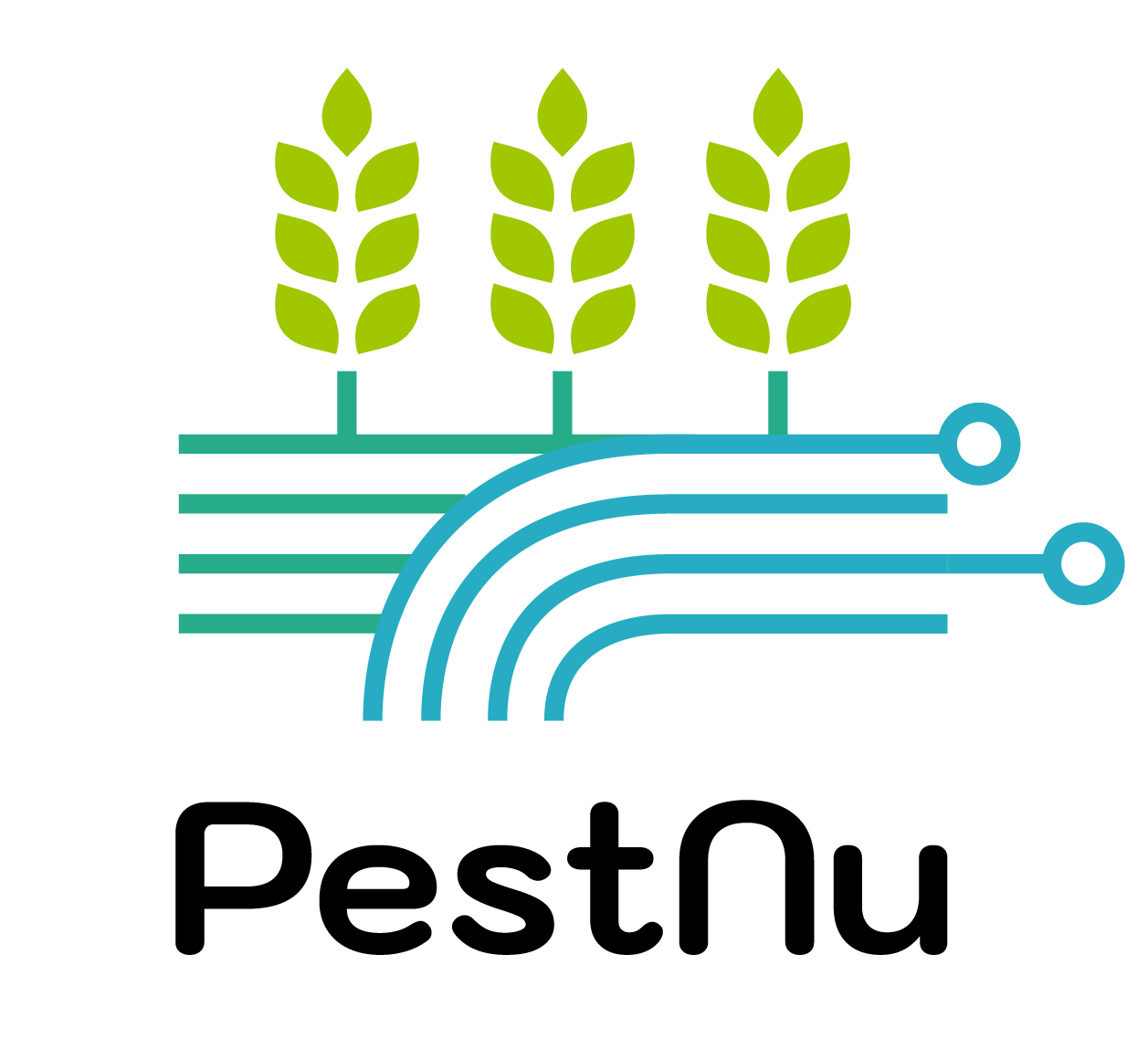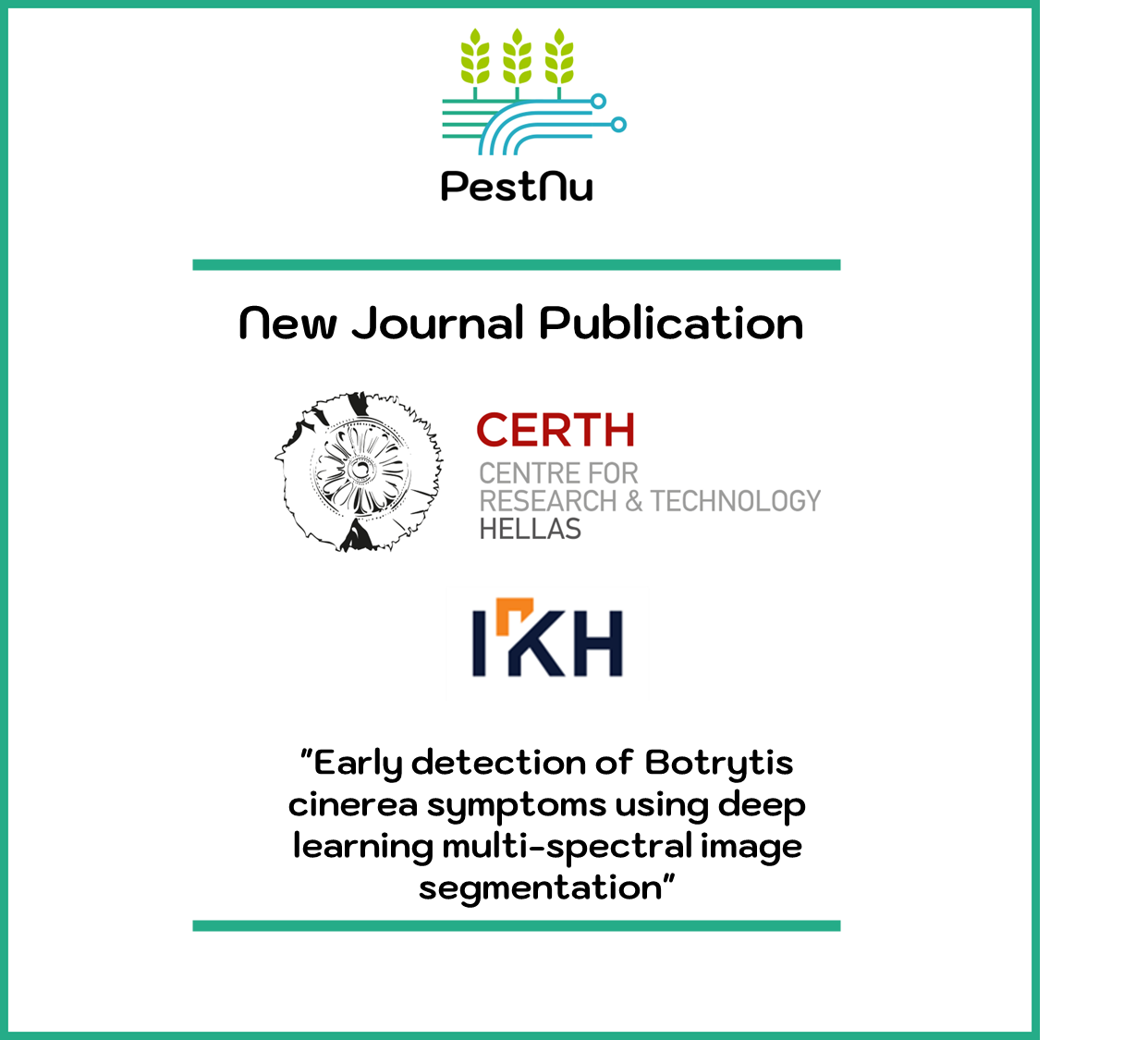CERTH and IKowHow have proceeded to another great achievement within the context of PestNu project!
The article “Early detection of Botrytis cinerea symptoms using deep learning multi-spectral image segmentation” has been published at Smart Agricultural Technology Journal.
The authors of the article are: N. Giakoumoglou, E. Kalogeropoulou, C. Klaridopoulos, E. M. Pechlivani, P. Christakakis, E. Markellou, N. Frangakis, D. Tzovaras and its respective DOI is the following: https://doi.org/10.1016/j.atech.2024.100481
The abstract and the keywords of the publication can be found below:
Abstract
Botrytis cinerea is an airborne plant pathogen that causes grey mould disease on horticultural crops, such as tomato, cucumber, pepper, and more. Early detection is crucial for timely and effective strategies for crop loss prevention. In this study, in planta assays were set up enabling a thorough assessment of grey mould progress on cucumber plants both artificially inoculated with two different inoculation methods, and naturally infected throughout the whole growing season of the host under controlled conditions simulating the environment typically prevailing in greenhouses. Multi-spectral imaging was used to capture a novel dataset across various spectral bands containing multiple stages of infection. Deep learning (DL) segmentation architectures, combined with Convolutional Neural Networks (CNNs) and Vision Transformers (ViTs) encoders, were employed to identify B. cinerea at various infection stages. The U-Net++ model with a MobileViT-S encoder performed best, achieving a Dice Coefficient (DC) of 0.677, an Intersection over Union (IoU) of 0.656, and a recall rate of 0.807, with a high overall accuracy of 90.1 %. In regards to early detection, the model achieves an IoU of 0.375 on 2nd day post inoculation (dpi), 0.230 on 1st dpi and 0.437 on the 6th dpi. The infection stages were compared to similar visible symptoms of physiological decline or plant responses to abiotic stress. The outcomes of this study demonstrate an important advance in the Artificial Intelligence (AI) plant health detection, for early crop disease diagnosis.
Keywords: Botrytis cinereaDeep learningEarly detectionGrey mouldImage segmentationMultispectral imaging
You can reach the full article following this link: https://www.sciencedirect.com/science/article/pii/S2772375524000868?via%3Dihub

